Converting Digital Tracks Into 12-Inch Vinyl Records
In an age where digital music reigns supreme, the resurgence of vinyl records stands as a testament to the enduring charm and warmth of analog sound. While digital audio has become the dominant medium for music consumption, vinyl records offer a unique and tangible experience that cannot be replicated by the convenience of streaming or downloading. In this article, we'll explore the world of 12-inch vinyl records, focusing on the captivating process of converting digital tracks into physical vinyl. We'll also delve into the appeal of vinyl records, the trends that have emerged in the digital age, and the future of audio in a world that embraces both the digital and the physical.
The Difference Between Physical Media Like Vinyl Records and Digital Audio
The debate about the various qualities of physical audio media, such as vinyl records, and digital audio has been ongoing since the advent of digital music. Each medium has its unique characteristics, and the choice between them often comes down to personal preference. Let's examine the key distinctions:
- Sound Quality: Vinyl records are renowned for their warm and organic sound. They offer a depth and richness that digital audio can struggle to replicate. Analog audio has a certain nostalgia and authenticity that many listeners find captivating. On the other hand, digital audio allows for stereo effects and, some may say, a more “complete” audio experience than the physical limitations of a vinyl record allow for.
- Tangibility: Vinyl records are tactile and tangible. Holding a vinyl record, carefully placing the needle on the grooves, and watching it spin is an immersive and ritualistic experience that connects the listener with the music on a physical level. In contrast, digital audio is intangible and lacks a physical presence… but can go anywhere with you in a much more convenience package (e.g. your phone).
- Album Artwork: Vinyl records feature large, intricate album artwork that can be admired while listening to the music. Digital audio, though convenient, often lacks a satisfying visual dimension.
- Collectibility: Vinyl records have enduring collectible value. Limited editions, rare releases, and vintage records can become highly sought-after by collectors.
- Convenience: Digital audio offers unparalleled convenience. Music can be accessed instantly, stored on a portable device, and easily shared or streamed from the cloud.
Trend #1: Digitizing Vinyl Records and Other Physical Media into Digital Format
The transition from analog to digital audio was a game-changer for the music industry. Digitizing vinyl records and other physical media was a logical step in preserving and modernizing personal music collections. The process of digitizing vinyl, tapes, and CDs involves using specialized equipment to convert the analog audio on the record into digital files. This digital format allows for easy playback on computers, smartphones, and other digital devices.
Digitizing vinyl records offers several advantages:
- Preservation: Digitizing vinyl records helps preserve the audio content, preventing degradation over time.
- Portability: Digital files are highly portable and can be played on a variety of devices, offering flexibility for listeners.
- Restoration: Digital audio allows for the restoration of old or damaged vinyl records, reducing pops, clicks, and surface noise.
- Easy Sharing: Digitized music can be easily shared with others and uploaded to streaming platforms.
Trend #2: Getting Back to Vinyl and Creating Vinyl Records from Digital Audio Sources
In a world dominated by digital audio, there has been a resurgence of interest in vinyl records. Many music enthusiasts and artists have embraced vinyl records for their unique characteristics and tangible appeal. This trend has led to a fascinating phenomenon that “reverses” the modernization of the music industry altogether: the creation of vinyl records from digital audio sources.
There are several reasons behind this trend:
- Unique Listening Experience: Vinyl records provide a distinctive listening experience that is highly valued by music enthusiasts. The warm sound, analog charm, and larger-than-life album art all contribute to a unique journey.
- Artistic Expression: Musicians and artists appreciate the creative possibilities that vinyl records offer. They see the creation of vinyl records from digital audio as an art form that extends beyond the music itself.
- Personalization: Custom-made vinyl records allow for personalized releases, making them ideal for independent artists and small labels.
- Collectibility: Limited edition vinyl records created from digital sources have gained a collectible value. Collectors are drawn to the rarity of such releases.
Custom Lathe-Cut Vinyl Records from Freestyle Vinyl
One company that has been at the forefront of this trend is Freestyle Vinyl. They specialize in creating custom lathe-cut vinyl records from digital audio sources. Whether you're an independent artist looking to release a unique vinyl record, a music enthusiast with a favorite digital playlist, or someone seeking a personalized gift, Freestyle Vinyl offers a solution.
Here's how the process works:
- Audio Preparation: The digital audio is prepared for vinyl, ensuring that it meets the requirements for optimal sound quality.
- Customization: You can personalize your vinyl record with custom labels, artwork, personal audio messages, etc.
- Size Options: Freestyle Vinyl offers various vinyl sizes, including the popular 12-inch format. This allows you to create a vinyl record that suits your vision. Unique options such as 10” picture discs can help you create the ultimate custom vinyl record!
- Quality Control: Each record is carefully inspected to meet high-quality standards for both audio fidelity and physical condition.
- Packaging: The finished custom lathe-cut vinyl records are carefully packaged and ready for you to enjoy or distribute.
Why We Prefer Vinyl Over Digital Audio
The ongoing debate of vinyl vs. digital audio continues to spark discussions among audiophiles, collectors, and music enthusiasts. While both mediums have their merits, many individuals find themselves drawn to vinyl records for various reasons:
- Sound Quality: Vinyl records offer a warm, analog sound that is cherished for its depth and richness. The imperfections of vinyl, such as the gentle crackling, contribute to the overall listening experience.
- Tangibility: The physicality of vinyl records is a key part of their appeal. Holding a vinyl record, flipping it over, and dropping the needle create a tangible connection to the music that is unparalleled.
- Artwork: Vinyl records often feature large, intricate album artwork that complements the music and enhances the overall experience. Digital audio lacks this visual element.
- Collectibility: Vinyl records have an inherent collectible value, especially rare and limited editions. Collectors are drawn to the hunt for unique vinyl releases.
- Nostalgia: Vinyl records evoke nostalgia and a sense of timelessness. They carry the memories of a bygone era, making them more than just a medium for music.
- Ritual: The act of playing a vinyl record is a ritual that many find comforting and engaging. It's a process that involves care and attention, elevating the listening experience.
The Future of Audio
As we look to the future of audio, it's clear that digital audio will continue to be the vast majority of what people consume. Streaming services, digital downloads, and portable music players have become integral parts of our lives. However, physical media, including vinyl records, has already carved out a place in people's lives and will continue to do so. When an album or a playlist is special, it deserves to have a physical place in your life, not just a flash on a screen.
The demand for custom, personalized products is on the rise, and vinyl records are the perfect physical medium to accompany the majority-digital audio world. Vinyl offers a tangible and collectible experience that digital audio cannot replicate. The trend of creating vinyl records from digital audio sources highlights the enduring appeal of this medium.
In conclusion, while the music industry progresses into the future, the coexistence of digital audio and physical media is likely to continue. Vinyl records, with their unique sound, tangible appeal, and collectible value, will remain an important part of the audio landscape. The ability to create custom lathe-cut vinyl records from digital sources, as offered by companies like Freestyle Vinyl, allows for a personalized and artistic expression that bridges the gap between the digital and analog worlds. Whether you're a musician, a collector, or a music lover, the allure of vinyl records and the possibilities they offer are here to stay, enriching the way we experience and appreciate music.




